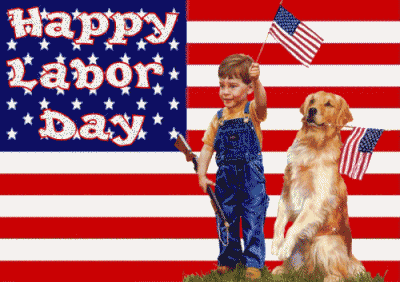Please note that this article was copied from The United States Department of Labor website
Labor Daze – Pride, Chaos and Kegs on Labor’s First ‘Day’
On the morning of September 5, 1882, a crowd of spectators filled the sidewalks of lower Manhattan near city hall and along Broadway. They had come early, well before the Labor Day Parade marchers, to claim the best vantage points from which to view the first Labor Day Parade. A newspaper account of the day described “…men on horseback, men wearing regalia, men with society aprons, and men with flags, musical instruments, badges, and all the other paraphernalia of a procession.”
The police, wary that a riot would break out, were out in force that morning as well. By 9 a.m., columns of police and club-wielding officers on horseback surrounded city hall.
By 10 a.m., the Grand Marshall of the parade, William McCabe, his aides and their police escort were all in place for the start of the parade. There was only one problem: none of the men had moved. The few marchers that had shown up had no music.
According to McCabe, the spectators began to suggest that he give up the idea of parading, but he was determined to start on time with the few marchers that had shown up. Suddenly, Mathew Maguire of the Central Labor Union of New York (and probably the father of Labor Day) ran across the lawn and told McCabe that two hundred marchers from the Jewelers Union of Newark Two had just crossed the ferry — and they had a band!
Just after 10 a.m., the marching jewelers turned onto lower Broadway — they were playing “When I First Put This Uniform On,” from Patience, an opera by Gilbert and Sullivan. The police escort then took its place in the street. When the jewelers marched past McCabe and his aides, they followed in behind. Then, spectators began to join the march. Eventually there were 700 men in line in the first of three divisions of Labor Day marchers. Final reports of the total number of marchers ranged from 10,000 to 20,000 men and women.
With all of the pieces in place, the parade marched through lower Manhattan. The New York Tribune reported that, “The windows and roofs and even the lamp posts and awning frames were occupied by persons anxious to get a good view of the first parade in New York of workingmen of all trades united in one organization.”
At noon, the marchers arrived at Reservoir Park, the termination point of the parade. While some returned to work, most continued on to the post-parade party at Wendel’s Elm Park at 92nd Street and Ninth Avenue; even some unions that had not participated in the parade showed up to join in the post-parade festivities that included speeches, a picnic, an abundance of cigars and, “Lager beer kegs… mounted in every conceivable place.”
From 1p.m. until 9 p.m. that night, nearly 25,000 union members and their families filled the park and celebrated the very first, and almost entirely disastrous, Labor Day.
Quote for Labor Day!
“My grandfather once told me that there were two kinds of people: those who do the work and those who take the credit. He told me to try to be in the first group; there was much less competition.”
Indira Gandhi
